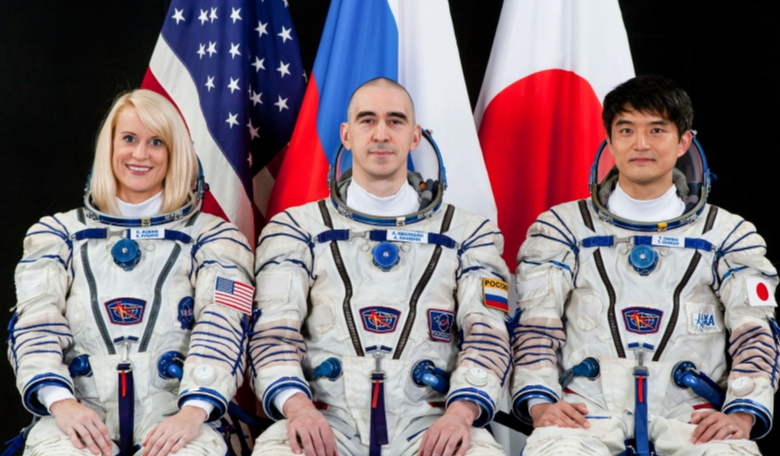It may have been less than a month since Tim Peake, Yuri Malenchenko and Tim Kopra returned to Earth after 186 days in space, but science and space wait for no man or indeed woman. Ready to fill up the void left by the previous mission crew members, it is the turn of NASA astronaut Kate Rubins, cosmonaut Anatoly Ivanishin of the Russian space agency Roscosmos, and astronaut Takuya Onishi of the Japan Aerospace Exploration Agency to head to the International Space Station (ISS) tonight, with launch preparation starting at around 8.30 p.m EDT.
All three will travel
in an upgraded Soyuz spacecraft and will spend approximately four
months at the station, before returning to Earth in October. During
their two-day transit from the launch pad at the Baikonur Cosmodrome
in Kazakhstan to the ISS, the trio will test a variety of upgraded
systems on their Soyuz MS-01 spacecraft before docking to the space
station’s Rassvet module on Saturday, July 9th. A number of
modifications have been applied to the spacecraft including
additional micrometeoroid debris shielding and increased power with
more photovoltaic cells on the spacecraft’s solar arrays.
The newly arrived
Expedition 48-49 crew will be greeted by Expedition 48 Commander Jeff
Williams of NASA and Flight Engineers Alexey Ovchinin and Oleg
Skripochka of Roscosmos and together, the crew members will continue
the several hundred experiments in biology, biotechnology, Earth
science and physical science already under way on board the orbital
complex.
Kate Rubins, who will
assume the role of Flight Engineer for Expeditions 48 and 49 was
chosen from a pool of over 3,500 applicants to receive a spot on
NASA’s 2009 astronaut training class. Rubins will participate in
several science experiments during her time at the space station, and
she is scheduled to be the first person to sequence DNA in space.
Research into
sequencing the first genome in microgravity and how living in space
changes the human body’s bone mass and cardiovascular systems are
just two examples of the many experiments in which Rubins may
participate.
Board engineer Onishi
was also selected in 2009 by the Japanese Aerospace Exploration
Agency as a potential astronaut candidate for the space station and
it is likely he will engage in scientific experiments in the Japanese
Experiment Module (JEM) – the largest single module attached to the
ISS – that is also known as Kibo.
Although Wednesday’s
flight will be the first orbital mission for Rubins and Onishi,
Ivanishin on the other hand has already flown to space in 2011. The
Russian cosmonaut was a flight engineer for the Expedition 29/30
increment to the ISS and will therefore serve as the commander of
Expedition 49 due to his spaceflight experience.











